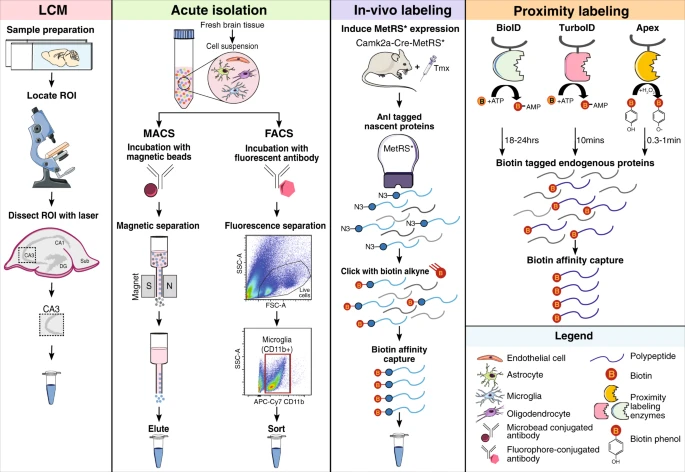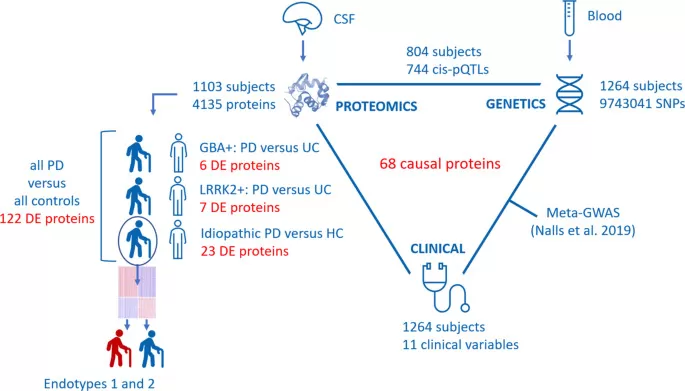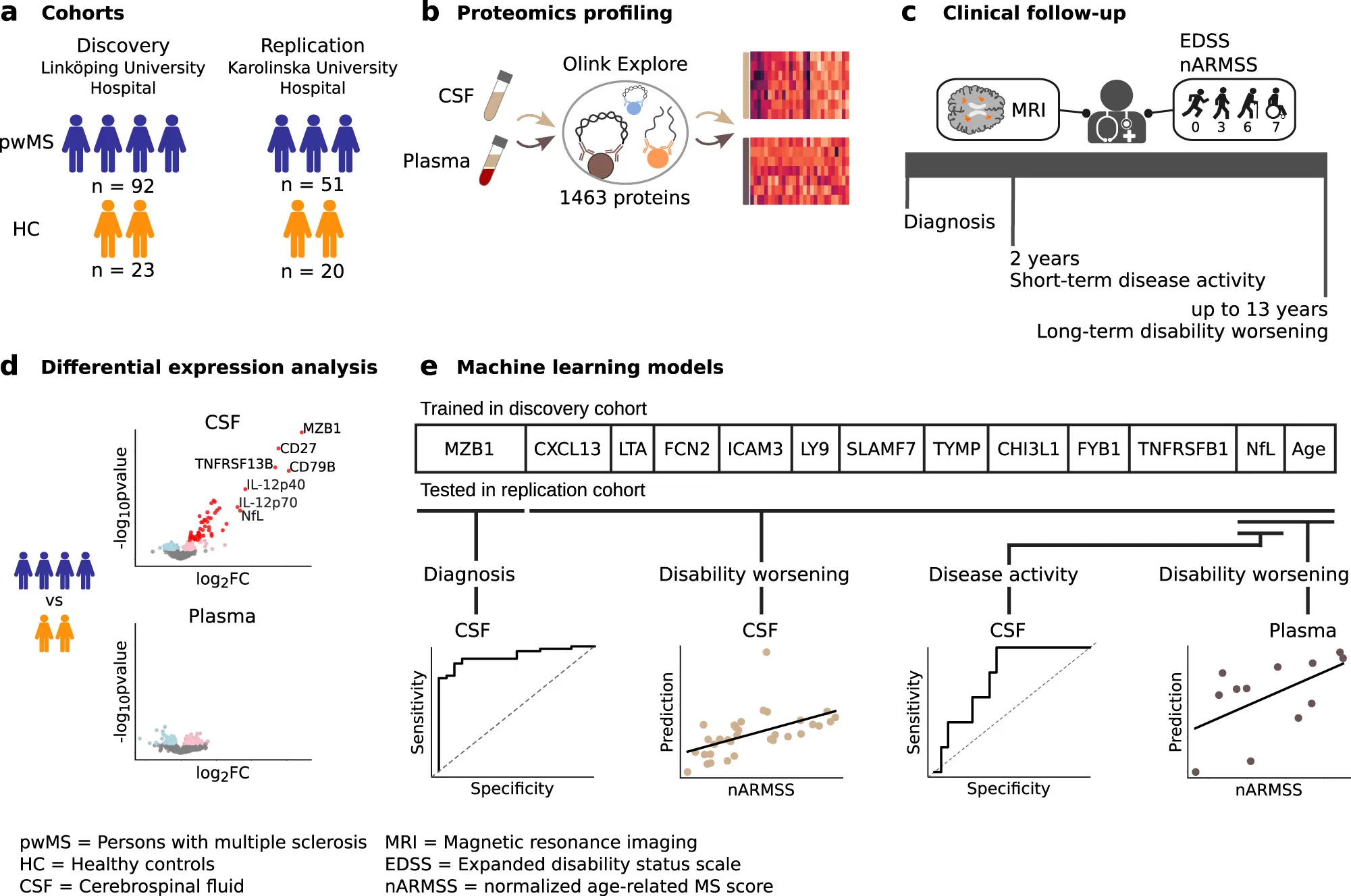Applications of Proteomics in Neuroscience
The study of the brain and its complex functions has always fascinated scientists and medical professionals. As we make strides in neuroscience, proteomics has emerged as a pivotal tool, providing unparalleled insights into the molecular workings of the brain. Proteomics, the large-scale study of proteins, has opened new avenues for understanding everything from basic brain function to intricate mechanisms underlying neurological diseases.
In this article, we'll delve into how proteomics is being applied in neuroscience, revolutionizing our understanding of brain activity, disease mechanisms, and potential treatments for a variety of neurological disorders. By exploring the primary applications and methodologies, we will see how proteomics is influencing the future of brain research.
Table of Contents
What is Proteomics? A Brief Overview
Proteomics is the large-scale study of proteins, which are the molecular machines that carry out most of the work in cells. Proteomics aims to identify and quantify the entire set of proteins (the proteome) in a given organism, tissue, or cell type. Proteins play critical roles in almost every cellular process, including signaling, metabolism, and cell structure.
Key Techniques in Proteomics
-
Mass Spectrometry: This technique helps identify proteins by measuring the mass-to-charge ratio of their ions. It's one of the most powerful tools in proteomics, enabling the detection of thousands of proteins in a single sample.
-
Two-Dimensional Gel Electrophoresis (2D-GE): Used for separating proteins based on their isoelectric point and molecular weight.
-
Western Blotting: Used to detect specific proteins within a sample.
Proteomics differs from genomics, which focuses on the genetic material, by studying the dynamic changes in protein levels, modifications, and interactions.
The Role of Proteomics in Understanding the Brain
The brain is an incredibly complex organ, composed of billions of cells and even more intricate signaling networks. Proteomics helps to decode how proteins interact to regulate brain functions, cognitive processes, and neuroplasticity.
Proteins in Brain Function
Proteins are involved in everything from neurotransmitter release to the maintenance of neural networks. For example, neurotransmitter receptors, ion channels, and signaling molecules are all proteins that play critical roles in the brain’s functionality. Understanding these proteins at a deeper level provides insights into how the brain processes information, forms memories, and controls behaviors.
Brain’s Unique Proteome
The human brain has a distinct proteome that is essential for its development, maintenance, and function. Proteomic analysis of the brain can reveal changes in protein expression that occur in response to environmental factors, learning experiences, or even injury.
Proteomics in Neurological Disease Research
Proteomics is a crucial tool in the study of neurological diseases, as it allows for the identification of biomarkers and helps in understanding disease mechanisms at the molecular level.
Alzheimer’s Disease
In Alzheimer's disease, protein misfolding and aggregation play a critical role. Proteins such as amyloid-beta and tau form plaques and tangles that disrupt neural function. Through proteomic analysis, scientists are able to identify early-stage biomarkers, providing opportunities for earlier diagnosis and the development of targeted therapies.

Local proteomics approaches to define the cellular basis of Alzheimer’s disease (Rayaprolu et al., 2021)
Parkinson’s Disease
Parkinson's disease involves the degeneration of dopamine-producing neurons. Proteomics allows researchers to study the specific protein changes that occur as the disease progresses. By identifying proteins involved in dopamine signaling, it’s possible to explore new avenues for therapeutic intervention.

Identifying causal proteins in Parkinson's disease by proteomics (Kaiser et al., 2023)
Multiple Sclerosis (MS)
In MS, the immune system attacks the protective sheath surrounding nerves. Proteomics helps to identify biomarkers associated with inflammation and myelin degradation, paving the way for better diagnostic and treatment strategies.

Multiple Sclerosis Research Based on Proteomics (Åkesson et al., 2023)
Proteomics and Brain Development
Proteomics also plays a significant role in understanding how the brain develops. Neurogenesis, the formation of new neurons, and synaptogenesis, the formation of synapses, are driven by specific proteins that are expressed at different stages of brain development.
Proteins in Synaptic Plasticity
Synaptic plasticity is a key mechanism by which the brain strengthens or weakens synapses, impacting learning and memory. Proteomic studies are critical in identifying the proteins involved in these processes, such as those related to long-term potentiation (LTP) and long-term depression (LTD).
Environmental Influences on Brain Proteome
Environmental factors, including nutrition, stress, and exposure to toxins, can alter the brain’s proteome. By studying these changes, researchers gain insights into how early-life experiences influence brain development and behavior.
Proteomics in Brain Injury and Neuroinflammation
Brain injuries, such as traumatic brain injury (TBI) and stroke, lead to complex changes in protein expression. Proteomics is used to understand these changes and identify potential therapeutic targets.
Proteomics in TBI
After a traumatic brain injury, proteins involved in inflammation, cell survival, and repair are altered. Proteomic analysis of cerebrospinal fluid (CSF) or brain tissue can identify biomarkers that predict injury severity and recovery, leading to more personalized treatment approaches.
Neuroinflammation and Neurodegeneration
Neuroinflammation is a hallmark of many neurological disorders, including Alzheimer's and Parkinson's diseases. Proteomics can help identify the proteins involved in inflammation, cytokine signaling, and immune cell activation in the brain.
Proteomics for Drug Discovery and Personalized Medicine in Neuroscience
Proteomics provides valuable information for drug discovery, especially in neuroscience. By identifying proteins that are altered in neurological diseases, proteomics can guide the development of novel drugs and personalized therapies.
Targeted Drug Discovery
Proteomics enables researchers to identify proteins that are potential drug targets. For instance, in Alzheimer's disease, identifying proteins involved in amyloid-beta aggregation can lead to the development of drugs that prevent plaque formation.
Personalized Medicine
Proteomic profiling of individual patients can help tailor treatments to their specific disease characteristics, making it a crucial part of personalized medicine. By understanding the unique proteome of a patient's brain, more effective, customized treatments can be developed.
Challenges in Applying Proteomics to Neuroscience
Despite its potential, proteomics faces several challenges in neuroscience.
The brain’s proteome is dynamic and highly complex, making it difficult to capture a complete picture of all the proteins involved. The diversity of protein isoforms and post-translational modifications adds to the complexity.
Obtaining high-quality brain samples is another challenge. Techniques like laser capture microdissection are used to isolate specific brain regions, but these methods can be time-consuming and expensive.
The Potential of Proteomics in Neuroscience
The future of proteomics in neuroscience is promising, with new technologies offering the potential for even greater insights into brain function and disease.
The integration of proteomics with genomics, transcriptomics, and metabolomics will provide a more comprehensive understanding of brain function and disease, enabling researchers to study the brain at multiple levels.
AI and machine learning can help analyze vast proteomics datasets, identifying patterns that would be difficult for humans to discern. This could lead to faster discoveries of biomarkers and drug targets.
Proteomics is undoubtedly a game-changer in neuroscience, offering profound insights into the molecular underpinnings of brain function and neurological diseases. As technology continues to advance, proteomics will play an even more significant role in understanding the brain and developing more effective treatments for a wide range of neurological conditions.
To stay updated with the latest research in proteomics and neuroscience, consider following reputable sources or reaching out to organizations like Metwarebio, which specialize in proteomics technologies and solutions.
FAQs
What are the benefits of proteomics in neuroscience?
Proteomics provides a deeper understanding of brain function and diseases at a molecular level, enabling early diagnosis and better treatment strategies.
How is proteomics used to study neurological diseases?
By identifying protein biomarkers and understanding protein interactions, proteomics helps in discovering new drug targets and diagnostic tools for diseases like Alzheimer’s and Parkinson’s.
Reference
1. Rayaprolu, S., Higginbotham, L., Bagchi, P. et al. Systems-based proteomics to resolve the biology of Alzheimer’s disease beyond amyloid and tau. Neuropsychopharmacol. 46, 98–115 (2021). https://doi.org/10.1038/s41386-020-00840-3
2. Kaiser, S., Zhang, L., Mollenhauer, B. et al. A proteogenomic view of Parkinson’s disease causality and heterogeneity. npj Parkinsons Dis. 9, 24 (2023). https://doi.org/10.1038/s41531-023-00461-9
3. Åkesson, J., Hojjati, S., Hellberg, S. et al. Proteomics reveal biomarkers for diagnosis, disease activity and long-term disability outcomes in multiple sclerosis. Nat Commun 14, 6903 (2023). https://doi.org/10.1038/s41467-023-42682-9


